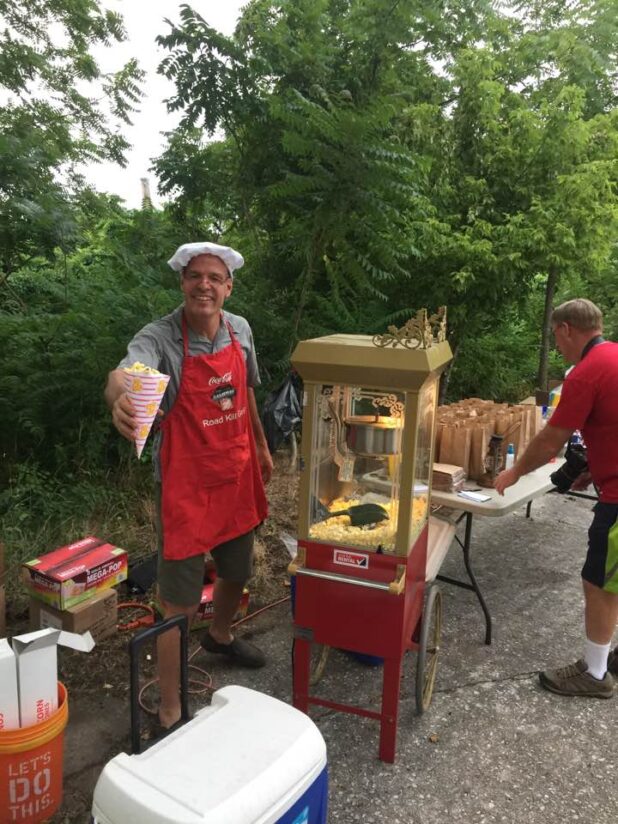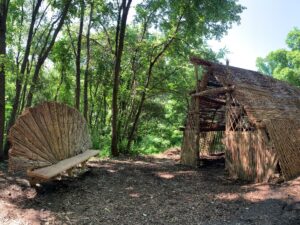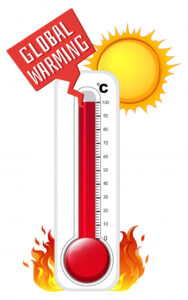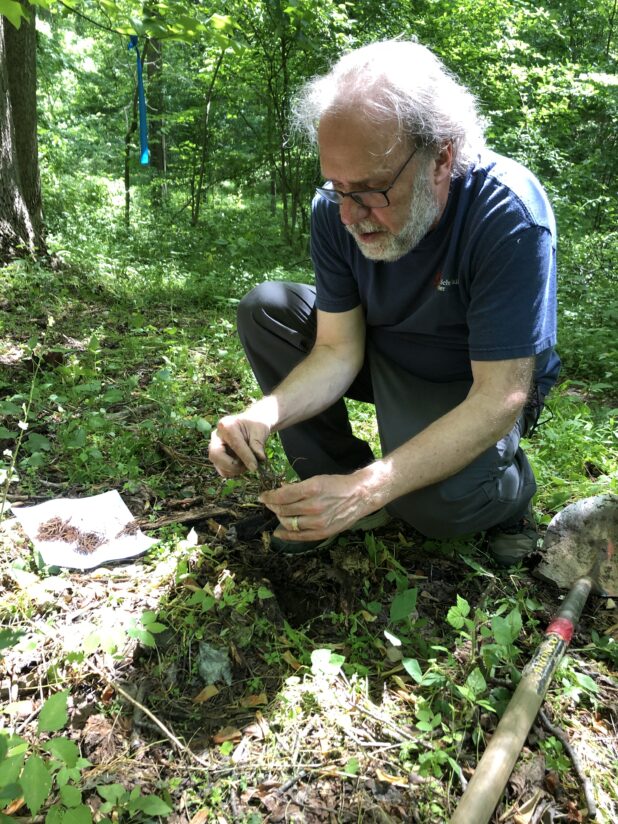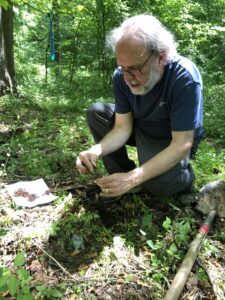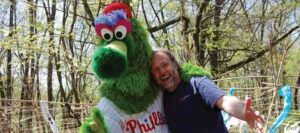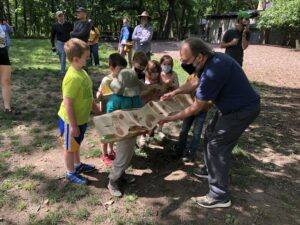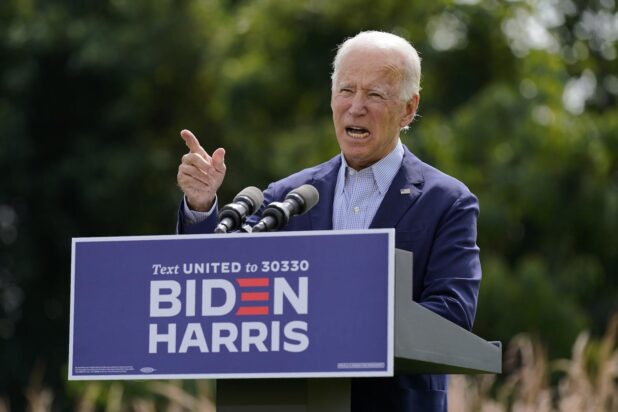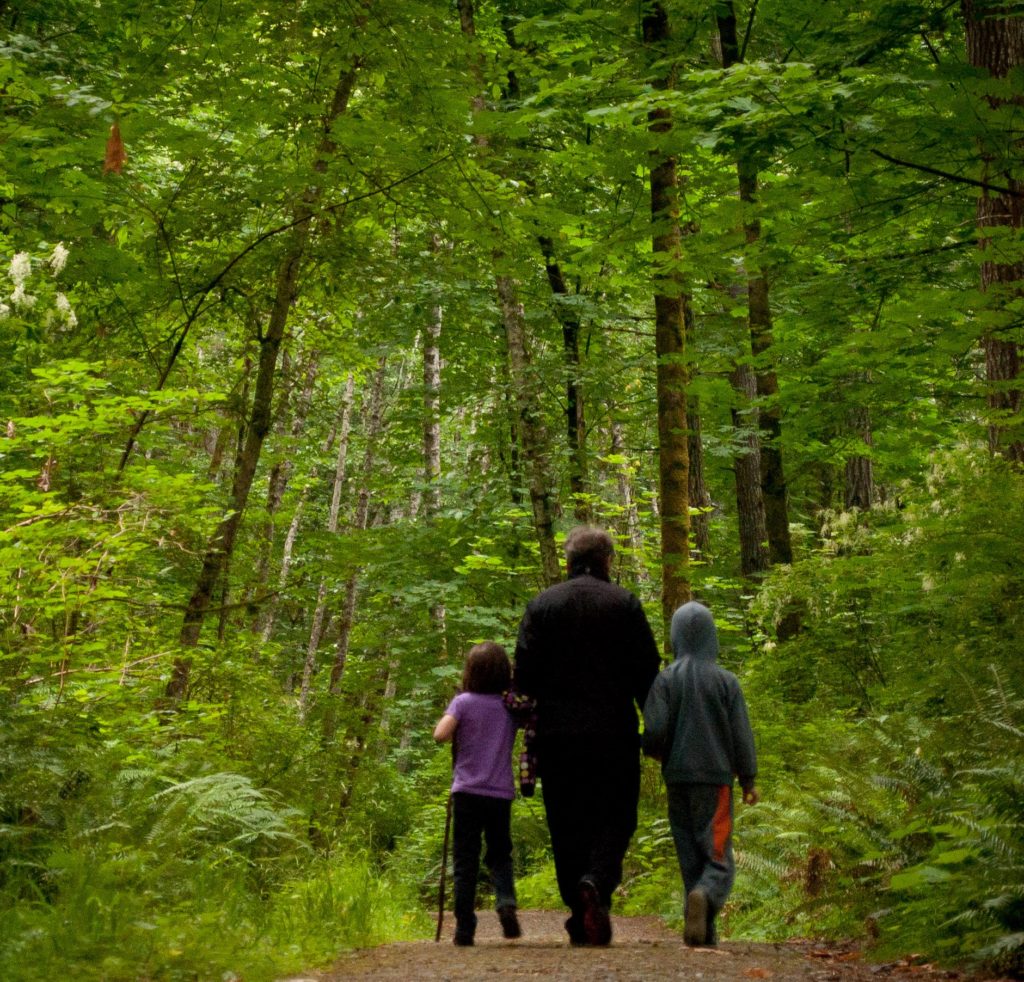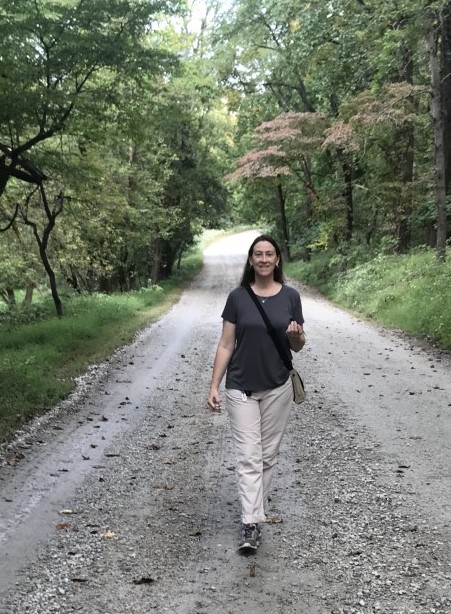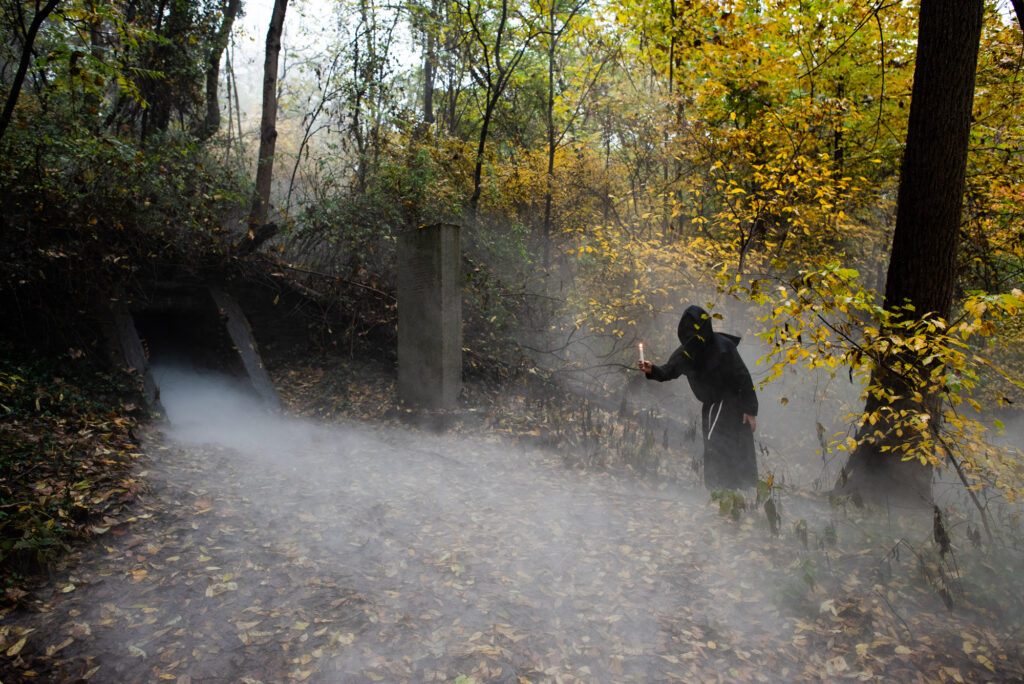Roxborough’s Tom Landsmann is a cross between Johnny Appleseed and the Energizer Bunny– he just keeps on planting and planting and planting… Over the last 20-plus years, Tom has either personally planted or helped plant thousands of trees in just about every public space in Roxborough: Gorgas Park, Germany Hill. the Wissahickon, the Upper Roxborough Reservoir Preserve, the Schuylkill Center, along the towpath. You name it, he has planted something there.
Even better, many of the trees he plants were lovingly grown by himself on his plot of land on River Road, right up against the Schuylkill and across the road from his home. Filled with oaks, maples, hickories, beeches, birches, hollies, pines, cedars, and more, the densely packed plot can amazingly hold as many as 4,000 trees.
Likewise, adding yin to this yang, he has personally pulled thousands of invasive trees, shrubs, vines, and more out of these same public spaces. Out with the bad, in with the good.
“There is almost no public green space in Manayunk or Roxborough,” Rich Giordano told me recently, “which does not have the fingerprints, footprints, and even tractor tracks of Tom Landsmann.” Rich should know; himself the president of the Upper Roxborough Civic Association, Rich and Tom have been co-leading efforts to improve the reservoir as a park, and over the last decade the two of them have planted more than 1,000 trees there alone.
As president of the Roxborough Manayunk Conservancy, Tom invites you to join him in the area’s re-greening. The group sponsors Two on Tuesdays, a volunteer stewardship session where people gather for two hours on Tuesday evenings at one of the Conservancy’s 18 sites to plant new good stuff while pulling out the existing invasive bad stuff.
Next Tuesday, July 6, at 7 p.m., the group is meeting at the reservoir; look for them at the front stairs at Port Royal and Lare. And when the group is done, they will be retiring to Tom’s nursery on River Road for an after-party– where you can see his riverside nursery yourself!
He’s been highly engaged in the community for the last several decades. A resident of River Road for 22 years, he has been president of the Residents of the Shawmont Valley Association, the local civic, plus served a long stint on the Schuylkill Center’s board. And Two on Tuesdays began with the Ivy Ridge Green Coalition, an effort he started long ago. Now under the wing of the Conservancy, Two on Tuesdays has grown, and some 20 people join them most Tuesdays.
“He is very driven,” says fellow board member Kay Sykora, herself a leader in greening efforts in the community, “about the future of the green space areas in the Roxborough-Manayunk community.”
“I’m not one to sit still,” Tom admits. “I guess I just hung up my marathon shoes for muck boots. But any good citizen just wants to make things better. I participated in all those organizations because I thought I had something to offer. I’m self-employed, and in business I look for a void, an opportunity. It’s extremely obvious that our city is not supporting our Roxborough-Manayunk green spaces. The reservoir’s wall has been crumbling for years, and the only maintenance the site receives is a quick mow at best. That’s an embarrassment on so many levels, and it’s insulting to those few like me that put so much effort and funding towards maintenance.”
So Tom fills the void, bringing his fellow “good citizens” along and supplying them with essentially his own carefully stocked equipment.
But Tom gets a lot back. “I have a great sense of pride as I drive or walk past our trees, shrubs, and plants peppered all over Roxborough-Manayunk as well as other parts of Philly,” he said. “Also, operating a native tree nursery is good for the body and soul; it gives me inner peace.”
Dave Cellini, president of Shawmont Valley after Tom, notes that “Tom is a standout and generous guy, always willing to share his time, energy, tools, and knowledge. He is sincere, straightforward, and doesn’t mince words.”
“Tom’s energy and enthusiasm,” adds John Carpenter, a board member of both the Conservancy and the Schuylkill Center, “keep our volunteers engaged. His knowledge of plants and horticulture helps the Conservancy’s work to endure and strengthens the neighborhood’s green spaces.”
Kay also admires his “perseverance for the mission. He will go to all lengths to see his vision completed, to help folks see the importance of our parks and environmental resources.”
“Tom is not only an advocate for preservation and a tireless worker on restoration projects,” Rich added, “he is also a very ardent proponent of recruitment, especially in regard to young people. Tom has for many years overseen MLK Service days in the northwest, bringing large numbers of students to our parks and other natural areas.”
He also thinks in long timelines. Remember those 1,000 trees at the reservoir? “At that site, we’re focusing on creating a mature upland forest. Fifty years after I’m gone,” he said, “it should happen.”
An old Chinese proverb says “the best time to plant a tree was 20 year ago. The second best time is now.” To modify the proverb just a little, the second best time is Tuesday at the reservoir, where you can meet Roxborough’s own Johnny Appleseed.
And if you miss Tuesday? Join anytime moving forward. “We plant until the ground freezes or Santa arrives,” he told me. “We never seem to run out of trees.”
Or, thankfully, energy. Go, Tom, go!
Mike Weilbacher directs the Schuylkill Center for Environmental Education in Upper Roxborough, wishes he planted half as many trees as Tom, and can be reached at mike@schuylkillcenter.org.

